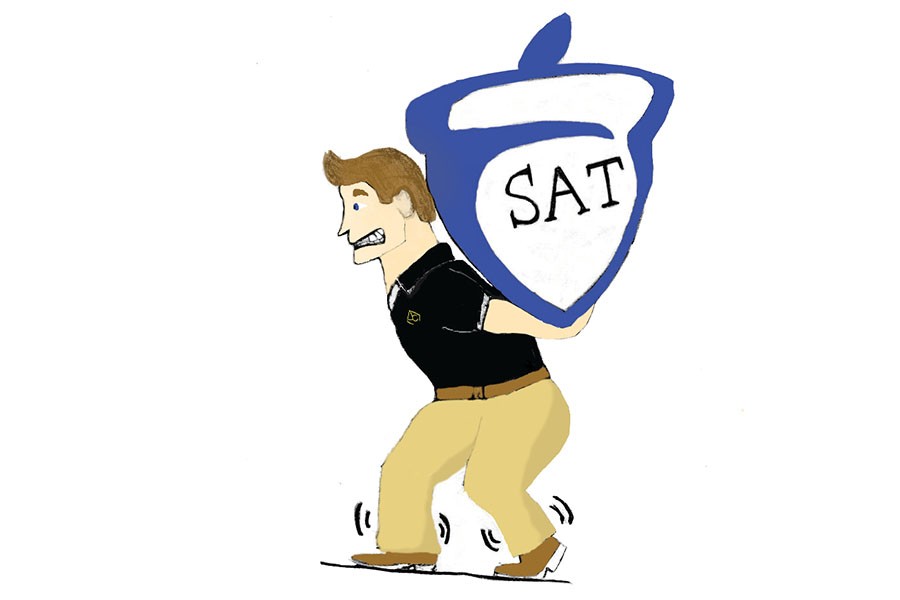Students approach the SAT incorrectly
Students carrying the weight of the SAT often take the wrong approach and struggle because of it. A lack of understanding of the test itself will make scoring high much more difficult.
The Scholastic Aptitude Test. More commonly known as the SAT or, when approached poorly, referred to as “why I’m not getting into a decent college.” The SAT doesn’t have to be a horror story, though. students often take the wrong approach in testing, and that is why the test is so vilified.
There are many misconceptions in standardized testing. One of them is that standardized testing measures intelligence and memorization. The test is meant to test “the reading, writing, and math skills that are critical for success in college and beyond.” The keyword provided by the CollegeBoard is “skills.”
If the SAT is broken down by its acronym, it means “a natural ability for education,” and so, the test is designed to see how well a student can take a test or read a passage. The test is not designed to see how well a student can interpret passages or memorize vocabulary.
The key to good standardized test scores is knowing the test. The SAT tests how well a student can take a test. Students are being tested on how to take this specific test: the SAT wants to know how well you can take the SAT.
If a test taker can look at the math and writing section of the SAT and realize that every time the test is given that it tests the same basic skills and rules, that test taker will be able to look into the rules that are tested, study them, and successfully complete each section.
Instead of trying to understand rules, students often go about the SAT drilling practice problems and tests to see if they can get more right the next time, not figuring out why they get each problem wrong. The best way to improve is to study why an answer is incorrect.
Students should ask themselves, “What is the SAT asking me that I don’t know?” or “Why did I choose the wrong answer when I know how to do it?” Students should not tell themselves, “I got that wrong because of a stupid mistake,” or “Uh, I will never know how to do that.”
Another tip is to realize that on the critical reading section of the test, the SAT tests active reading, not critical reading. Students should always tell themselves, “This passage about the history of yarn interests me,” and they should be underlining anything that could be of value.
A good starting point is to underline at least one thing per line in each passage. By underlining and feigning amusement, test takers can actively read the material and will have a more thorough understanding.
Another easy way to actively read is by noting all line references in the questions before reading, which basically means underlining words or sentences that are specifically referenced in the question before reading.
In the SAT, each answer has to be objectively right or objectively wrong. There is never room for interpretation on SAT questions because, unlike English class, the answers have to be objectively correct. Because every answer is objectively correct there is no room for interpretation, and EVERY answer is spelled out directly or indirectly (through the use of synonyms and antonyms) in the text.
Understanding the test is 90 percent of the battle, and the rest is a healthy breakfast and two good nights of sleep the days before.
Joe Kyburz is a Copy Editor for The Patriot and jcpatriot.com.






